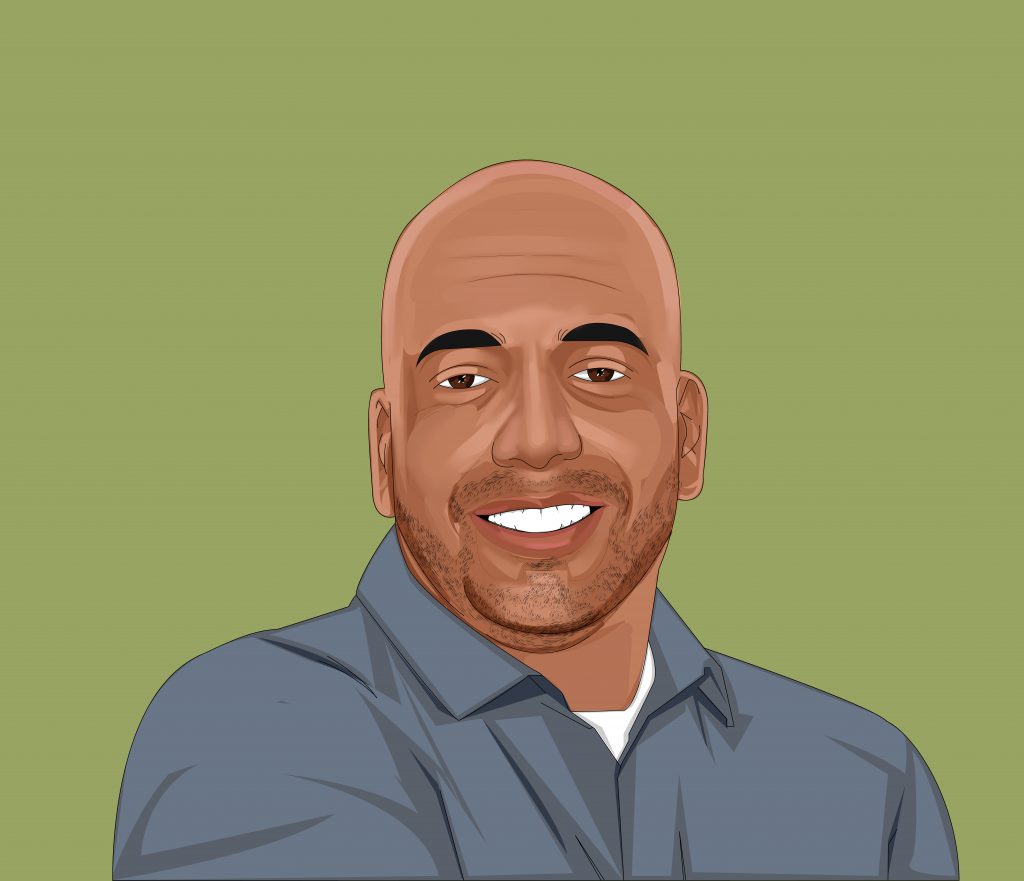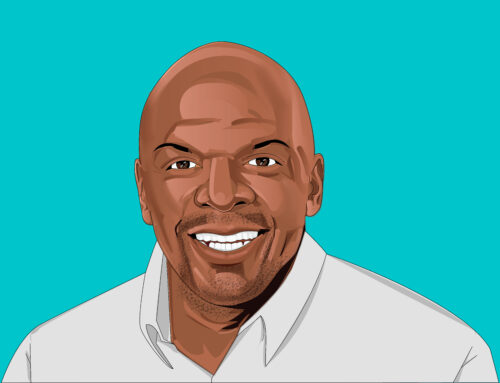In this episode of Talent Chronicles, Chris Bell joins us to talk about relationship-based recruiting and the importance it has in Talent Acquisition. Chris is an internationally experienced talent acquisition leader for over 20 years in the technology sector. Chris talks about the most effective ways to reach candidates and how to build a relationship with them. Additionally, he talks about the importance of building a stronger team with relationship-based recruiting and how it has affected different KPI’s.
JCSI: Hi everybody! This is Bergin Sullivan with JCSI. I’m here with Chris Bell for another interview in our Talent Chronicles series. Thanks so much for being with us today!
Chris: Thanks for having me, I’m really looking forward to it.
JCSI: So, you’ve been an internationally experienced talent acquisition leader for over 20 years in the technology sector, starting on the agency side and eventually moving to in-house to lead talent acquisition teams at leading software companies. Do you want to give us a quick background of how you got into talent acquisition and kind of how you led up to where you are today in your career?
Chris: So for me, it did start in the agency days back in late 1999, early 2000. I saw an article that said IT Recruiter. I wasn’t familiar with recruiting but I was interested in IT, so I faxed in a resume. And I got a call back and met with some fabulous people and long story short, I ended up taking a chance on this agency recruiter role. I was coming from technical support and I felt like, you know what? This is an opportunity. One, it didn’t pay too bad and two, it allowed me to actually learn about different technologies. At that time, I was doing a lot of web support and some basic technical support and I mean, that wasn’t too exciting. So, I wanted something different so I answered that article and ended up working at Comforce for about four years.
JCSI: Awesome! So, you’ve mentioned having experience with relationship-based recruiting. What is relationship-based recruiting to you and why do you think it is so important in Talent Acquisition?
Chris: So early on in my days at Comforce, those were the days when the early bird got the worm. You know, you come into the office early, you got new requisitions. And you’re competing with five to six other agencies trying to find the same talent and present them to the same job. That was super competitive. And when you think about getting up early and doing that year after year, that can get pretty taxing.
So how do you do that in a better way? And for me, it was really focusing on the people that I was getting hired into these roles. So how did I go about continuing that relationship and finding them the next job? From that point on, I really started focusing on the relationship, because if I had the relationship, they would want to be represented by me regardless of the time of the day that I reached out to them. Or they may even call me up and say, “Hey, I heard about this job. Do you have access to it?”. Really building those relationships create the foundation that set-in motion, this whole recruiting base relationship theory that I have, and the whole philosophy of recruiting that I think is the best way to recruit, to be quite honest.
So, we fast forward to today, what does that mean? That means that in my space today in exec recruiting, I’m focused on making sure that my leaders inside of the organization are building relationships with talent ahead of time. Really, the relationship at the end of the day, will win the talent war.
Any company could be flying high with the wind underneath their wings right now. And it takes one bad piece of press to take that air from underneath the wings. So when you think about that, is your company more attractive or less attractive when that happens?They’re probably going to be less attractive. It’s going to be harder to get talent. But what wins is if you already have relationships, right? Those relationships, they transcend the bad news and so you get this place to where “Hey John, you probably heard that press. Let’s talk about it.” You already have a door open; you already have that relationship and you can still make hires even with that negative air.
JCSI: Okay, and when you are going out and making those relationships, what type of outreach do you think is the best and the most effective way to reach them and to build that relationship?
Chris: That’s a great question. I think today, 9 out of 10 recruiters are sending InMail’s. For me, it is good old-fashioned picking up the phone, finding contact information, reaching out directly to prospects. My last resort would probably be InMail’s and that’s after I’ve already leveraged people who may know the person to get in contact with them.
But I think, most importantly, it’s about honest dialogue too. I always talk about my intent, it’s not about a job today, it’s about getting to know you, what you want to do, how I can support you in that, and maybe even introduce you to some people inside of my network at my company that you can share that vision to.
At the end of the day, we end up either creating a role built around that person, leveraging the strengths that they could bring to the organization, or we ended up leveraging that relationship into succession planning. It’s one of those things where sometimes you have incumbents who are not performing.
So, we have to coach leaders to really trust in that relationship that you’ve been building with that person we’ve been talking to over the last year, and sliding him into the role to experience exponential growth or continue with this single digit year over year incremental growth. Sometimes it’s about mitigating the risk in their mind to get them to make those hard decisions. But, really engaging talent, I think it can take many forms.
JCSI: What type of messaging do you think works best? Let’s say for a cold prospect of someone that you have don’t have a relationship with yet, what type of language would you say that you use to be successful to first get your foot in the door with that relationship?
Chris: I don’t know if there’s a particular language because I think every situation is quite different. I’ll give you an example, there was one situation, there was a guy who I was trying to track down for a very long time. I won’t say names, but he was over at a very iconic brand from a marketing perspective. It was a brand that literally, in the matter of a few years had become number one in the market. It was pretty phenomenal. So not only did the brand’s stock shoot up, that person’s stock shot up as well. He was someone I was trying to recruit for a while and I read all of his articles that he had been interviewed in. I did the research, watched all of the videos and I think the first conversation I had with him on the phone wasn’t even about the job. I don’t think I talked about the job until the second or third conversation that I was trying to recruit him into. But at that time, it was about something he said about the founder and his first day on the job. That initial conversation, I think I started out with just saying, “Hey, you know what? I watched this video of you. And I’m curious, what was the outcome of this? Cause you didn’t never finish the story.” And he just busts out laughing, and from there we had an instant rapport, and the conversation just went organically.
I think when you think about approaching someone, you can never templatize what you’re trying to do with any one individual, because we’re human and we’re all different. I think at the end of the day, it’s about being your authentic self, and being honest about your intentions.
That’s how I try to play in any situation that I’m in. I’ll pick up the phone and say, “Hey, pardon the interruption, me calling you directly here.” If I’m emailing them at their work, I say, “Hey, pardon the interruption me reaching you at work I tried you at this number and this number and this number, couldn’t get ahold of you.” I’m just really direct with people when it comes to that, because at the end of the day, I want them to feel like they can trust me.
When we think about the speed to trust, what does it take? Can you get trust in one conversation? I don’t know, it really depends. But I think you can get to a level of trust. Sometimes that takes showing some vulnerability, and being authentic is being vulnerable. When you can do that, you can build that trust relationship a lot quicker, and people don’t think that you’re just trying to sell them a bag of goods or fit them into a round circle. When really at the end of the day, we should be thinking about, what does this person want to do? And then how do we align it to our mission? And sometimes it’s not going to align, so you just say, “Hey, let’s stay in touch, and let’s keep the conversation going, and I just want to get to know you.” That’s how I approach everything when I think about relationship building.
JCSI: So that personalization is definitely key there. In terms of building that relationship, what would you say is the appropriate follow-up process for someone that’s not answering you? So, you don’t want to annoy them, but you don’t want to let them fall through the cracks. What would you say is some good advice on that?
Chris: Yeah, it’s interesting because it’s one of those, do as I say, not as I do. When I talk to my team, I’m a big believer that the pursuit has been lost, meaning that we give up too easy. Right? We send an InMail, we forget about it. We’ve never followed back up. For me, it it’s really about getting to “yes”. But when we hear the “no”, no is no. But then we have to take the no as “not right now” as well. There are a lot of people who think that you’re just another recruiter. So how do you differentiate yourself from being just another recruiter and saying, “Hey, my intention is to do what’s best for you, I’m not trying to just fill a job.” And, so, how can you get to that place, to where they understand that quickly? Sometimes you don’t get that opportunity because people just are unresponsive and all of your connections that you don’t have a direct connection. There’s no way for you. And so, what I tell my team is, you don’t stop until you’re a no, keep going. You follow up. We use email tracking software and things like that as well. And when you think about what that does, it gives us a signal. If someone hasn’t responded to my email in the last week, but they read it four times, it’s like, there’s some curiosity there. Based on the signals that I’m seeing, that they read it four times. From there I know how to follow up next. I can follow up maybe with more context about why I’m trying to reach them, or I can just call them and say, hey, I’ve been trying to reach you. I’m not sure if you saw my email- I’m sure they saw me email. But you know, I’m not sure if you saw my email, but I think really those are some of the tricks of the traits.
We do that and we follow up and it becomes, you take it from kind of a cold call to a semi- lukewarm call because they see your email, they know your name, they know what you’re calling about. It’s not like it’s complete lie at that point.
JCSI: And in your experience, how would you say relationship-based recruiting has helped to build a stronger team? And also, how has it affected different KPIs, maybe such as turnover rate or employee satisfaction and sort of the longevity of them at the jobs that you’re placing them at?
Chris: Yeah. That’s a big question. I’ll start with the first part in terms of how does it affect the team? With the team, I think what you’ll find when you have this relation-based recruiting model, and the way you can roll it out, you create a more collaborative environment for your team actually work together.
Typically, what you were doing, I mean, if you think about it this way, the typical recruiter waits to respond. They are looking for the signals from the HR business partner or the leader to say, hey, I need to open rec and it’s all react, react, react, react.
Let’s take that same leader who doesn’t have the opening today, but that situation say that scenario happens six months from now that I just described, but you know, this leader exists. They have headcount that’s opening up all the time. Wouldn’t it behoove you as your team to point your team in that direction of those types of profiles, where the team is collaborating and everybody’s coming together to surface these prospects ahead of time and to get to know them and making sure that we are getting the business involved with that.
When we think about, the team, it really becomes kind of a working unit. When we think about goals the goals become a team goal. So, we’re not talking about everybody needs to make 15 hires a month or whatever, it’s our team goal is going to be, 50 hires a month or whatever it may be.
The team looks at opportunities to make the team better. Now, when you think about the KPIs and the metrics and the retention and all of those things, the core KPI that you’re looking for inside of relationship-based recruiting is engagement. The single point of failure in relationship -based recruiting is our leaders not engaging. If our leaders are not engaging ahead of time, there’s no way we can be proactive. There’s no way that we can build a relationship. It just spells. Right. The recruiters can build it, but still, we need the business to build those relationships so we can actually move the dial on their hiring ahead of time and so on.
If they’re not engaging, it doesn’t work. What we really try to do is think about how do we measure engagement. How do we provide a scorecard? I like to call it a one 80 kind of view. It’s not them looking at us. It’s us looking at them and saying, hey based on the last quarter, it looks like, such and such is yellow, this person’s green, you know? Your organization overall is doing well. Right. But we need more engagement from these leaders. Because we know that engagement is going to get us to a place to where one biases are being torn down because they’re seeing diverse talent. They’re meeting them and they’re building relationships with them. They’re going to be more comfortable. They’re going to actually think outside of their homogeneous networks that they grew up with and went to school with and think about now I have this talent that’s been infused into my network. Now, how do I think about actually. Considering them walls, you know, when openings happening now, I consider them. Engagement becomes such an important key because that engagement leads to relationship building.
And then that ultimately leads to the hiring. In terms of retention, you cannot be what you cannot see. When we think about at the exec level, and that’s where my focus is, I’m bringing diverse talent in at the top. My job is literally changing the face of the company. At Microsoft before I left 75 to 80% of the hires were coming through the relationship base, proactive recruiting model at the executive level.
That’s huge. Meaning that we’ve known all of these people that we were going to hire before we hired them and we knew that we wanted to hire him, but it was just about finding the right opportunity inside the organization. When we think about retention, you cannot be what you cannot see. When we think about what’s happening down below, where we’re losing underrepresented minority talent, bringing diversity in at the top gives targets that they can aspire to be. So, it definitely increases retention as well.
JCSI: Sure. And sort of backtracking a little, you mentioned, being proactive. Could you define, and maybe touch on a little bit, a proactive recruiting model and kind of how you’ve used it and sort of what that means?
Chris: Yeah, absolutely. I mean when we think about relationship based recruiting and proactive, they’re almost one in the same. They’re right there. Basically, relationship-based recruiting is a proactive recruiting model. You can have proactive recruiting models when you actually go to conferences and you decide that, you know what, I’m going to go to the conference and I’m actually going to make hires ahead of time. I may not have needs today. But I’m going to go and I’m going to go to this conference, we’re going to meet great people. We’re going to do some interviews and we’re going to hire them. And we’re going to figure out what to do with them later. That’s a proactive recruiting approach. That doesn’t have anything to do with whatever relationship. Relationship-based recruiting is just one of the many proactive recruiting approaches, another proactive recruiting approach. Literally, for people that you’ve heard of in the industry that are great. Why don’t you just create an offer letter? And give them the offer letter. You know what typically happens? They’re like, is this real? And then eventually they’re like, well, this is a great offer, but I couldn’t come work with you without meeting people. Next thing you know, they’re interviewing. Those are proactive recruiting approaches. There’s a lot of different approaches that we can employ out there, and my job is to make the business think about how we can be leaning forward versus leaning back and waiting for stuff to happen to us.
JCSI: Okay. I like that idea about the offer letter right off the bat.
Chris: If you know, they’re great, why are you beating around the bush? I was talking to a colleague at Amazon and we were talking about proactive recruiting models. And it was interesting because I said, hey, I ended up delivering over after three weeks of just doing some sourcing, like, you know, great, diverse, leaders for the business. And she was like, did you guys hire him? And I was like, no, well, we’re just going to build the relationships over time. And finally, she was like, why don’t you just hire them? And you know, this is the funny thing. Amazon has those types of top pockets to where they can do that. But at the end of the day, there’s a lot of great talent out there and if you’re doing your work and you’re figuring out what great talent is, why not just hire them? Why do you beat around the bush and try to figure out, is there an actual role where they’re going to add value, blah, blah, blah? When you know they’re going to add value.
I have another buddy. He just went to Facebook and they made him a great offer. You know what he’s doing for the year? He’s sitting there and figuring out what he’s going to do. He’s shadowing some people, figuring out what problems they have, and he has a year to figure out what problems he wants to solve there. That’s a proactive recruiting approach that will yield huge dividends over time. They got a great talent. He’s sitting back looking at all of the different impact that he can make. Then after a year, he’s going to have a plan on the stuff that he wants to work on. More companies need to do that because that’s really proactive. That’s a proactive approach to get great talent in. How tight this market is today, you got to think out of the box because traditional methods are not going to get you there.
JCSI: Right. I love that. And would you have any advice for talent acquisition professionals that are just starting out or anyone in an entry level HR role or anything like that?
Chris: Yeah. That’s a great question. I think Gosh, what would I offer someone in that position? Again, it, you know, not to be over analytical on that, but it really depends on what they want to do depending on what I would tell them. But this is the one general thing that I would say is that regardless of what you do, you know, whatever it is, wherever your customer is.
And for us, I really feel like our customers, we have two customers. When you are in-house you have your business, that’s a customer, but you also have all of the prospects out there that are customers as well. Not to mention they’re customers of your company. I think putting them at the center of everything that you do and when you think about any type of experience that you want to build, you have to always start with the end result in mind. I’m sure many of you have heard this, but really think about the experience that you want to deliver. The experience that you want to deliver and this goes in life too, how you want to show up.
The perception that you want to give off and then what is it going to take to stand those things up? When anybody’s thinking about standing up function or standing up anything, it’s always about creating the experience, the vision, how would this thing interact? What will it do, what kind of value will it provide? What are the interdependencies that depend on it and so on, and then figure out, we got that experience? Now, this is what it’s going to take to stand it up for the most time, what we try to do, we go into different environments and we have an experience in mind, but we end up letting the tools and HR technology dictate what we have to do.
And it severely compromises our initial vision and what we were trying to do. I would always say keep that customer in center and really think about the experience that you’re trying to provide in any service or experience that you’re delivering and think about how you stand out and try to stay as true to that as possible. That would be my advice.
JCSI: That’s great. And was there anything else that you’d like to share? Anything we didn’t touch upon that you’d like to close out with?
Chris: No, no, I really appreciate the opportunity to do this. I’m happy to take additional questions from anyone. Anyone could reach out to me directly on LinkedIn, I communicate a lot through that tool and so if there’s any other questions anybody want to follow up, they can feel free to reach out to me.
JCSI: Great. Well, thank you so much again for joining us in another episode of our Talent Chronicle Series.
Chris: Thank you for having me.





